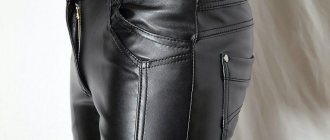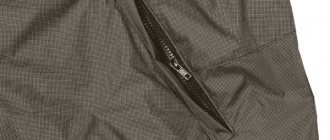In this article, we will help you figure out how to properly wash polyester and what subtleties of using synthetic clothing are important to remember.
Most fabrics contain synthetic fibers
The word "polyester" can often be found on clothing tags. Markets and shops are full of products made from this type of fabric. What is he like? Polyester is a synthetic material made from polyester fibers that has a lot of positive characteristics. Thus, clothing containing such fibers is elastic, wear-resistant, breathable, and easy to wash and iron. Think your favorite T-shirt is 100% cotton and your coat is 100% wool? But no. Nowadays, you rarely see products on the shelves that are entirely made of natural fabrics. The fact is that they cannot boast of excellent performance characteristics. This means that synthetics are present in our things almost everywhere, and it is very important to know how to properly care for them.
Features of the material
If the technology for manufacturing artificial fibers is followed, high-quality fabric is obtained. It is odorless and does not shed. Casual and outerwear, underwear, bags and textile products are made from it.
The material has the following properties:
- Ease.
- Low price.
- Synthetic fibers do not harbor moths and other insects.
- Does not absorb odors.
- It tolerates exposure to high and low temperatures well and protects against ultraviolet rays.
- High strength, resistance to friction and stretching, wear resistance.
- Ease of processing when making things.
- Easy to care for, synthetic items wash well, dry quickly, and are easy to iron.
- Fabrics retain their original color for a long time and do not fade.
- Water-repellent properties.
- Does not stretch, retains its shape after numerous washes.
All of the above properties are preserved only with proper use. When overheated, clothes can become deformed, and if the ironing regime is not followed, wrinkles can form that will be impossible to get rid of in the future.
Negative aspects of the material:
- Electrification. Static electricity accumulates in polyester fiber; the lightweight fabric sticks to the skin and attracts dust and other small particles.
- Cheap material that was not manufactured according to technology can cause allergies.
- The fabric does not dye well.
- Due to the high density, the clothes are uncomfortable to wear in hot weather.
- When exposed to bleaches, the fiber is destroyed.
Polyester fabric - briefly about properties and applications
For the most part, everyone is accustomed to thinking that polyester is used for sewing skirts, trousers and similar clothing. This is true, but the list of things in which polyester fabric is the main component does not end there - it also includes coats and jackets, and sometimes you can find polyester umbrellas on sale. The material has an antistatic effect - this was achieved thanks to the ideal combination of natural and synthetic fibers during the manufacturing process. This was also the reason for the extraordinary strength of the fabric.
Interesting fact: to care for a polyester product, it is always important to know exactly whether it is 100% natural or contains fiber impurities - wool, viscose, cotton, etc. In each specific case, the basic washing rules - permissible temperature conditions and other important recommendations will be displayed as an inscription on the label, on the collar, on the belt or on another part, depending on the type of product.
You must immediately understand that the main enemies of synthetics are temperatures above 40 degrees Celsius and aggressive cleaning agents that destroy their structure with each new wash. Accordingly, it is necessary to wash such items by machine only when using water at room temperature, with a permissible deviation in any direction of only a few degrees, as well as soft washing powder.
Plus, not all polyester items are machine or hand washable. For example, it is preferable to dry-clean jackets filled with this material in order to avoid rapid deformation and, as a result, acquiring an unpresentable appearance.
Polyester has the following features:
- high strength and wear resistance;
- light weight;
- ability to perfectly maintain shape;
- practically does not wrinkle;
- The fabric is resistant to light and heat. Polyester is resistant to ultraviolet radiation, however, the fabric should be protected from direct sunlight so that the paint does not fade;
- easy to wash;
- dries quickly;
- resists stains, it is difficult to stain the material;
- has antistatic properties;
- does not require special storage.
Based on the listed characteristics, it is logical to formulate rules for caring for products made from this material. Items made from polyester can be washed just like items made from any other fabric. Let's look at the labels on things.
Is polyester washable?
Since there is a huge amount of clothing made of 100% polyester on the market, the question arises of how to properly care for such things. Not only can they be washed, but they must be washed. If all requirements are met, such things will last quite a long time.
There are universal requirements that apply to all things. The care instructions for each item are indicated on the label attached to it. The washing mode (manual or machine), the maximum permissible temperature of water and iron are indicated.
The powder must match the color of the fabric. An all-purpose detergent is suitable for white clothes, and a detergent for colored clothes is suitable for dark clothes. There are powders that have an antistatic effect. After using the rinse aid, things become soft and elastic; they do not need to be ironed.
In what cases is it not possible?
Absolutely all polyester items can be washed. If you follow the care instructions, this will not harm the fiber.
General washing recommendations
Polyester “does not like” high water temperatures when washing, and even more so should not be boiled. As a result of boiling, the item may change color, lose shape, or become very wrinkled.
Before washing, clothes should be sorted by color: polyester does not tend to fade, but precautions will not hurt.
Any powder will do, the main thing is to select it depending on the color of the product:
- For colored fabrics, use compounds labeled “Color”;
- For white, you can use powders for white fabrics;
- Black things made of polyethylene will retain their shade better if they are washed with products for black.
You can also use liquid products: they are easily washed out of the fabric and do not leave white streaks.
This material does not tolerate treatment with chlorine-containing bleaches. Things should be dried in the shade, since the sun has a negative effect on the structure of the fibers of matter.
Temperature
If the label is missing any instructions, or is cut off and lost, there are general recommendations that apply to all polyester products. You can wash items made from synthetic thread at a temperature of 40°C. To ensure that the front side of the fabric undergoes changes to a lesser extent, things are turned inside out.
If the item only needs to be refreshed and there are no traces of dirt on it, then water heated to about 20-25°C will do. In colder water, it becomes difficult to use the powder, since it will not dissolve and will not show its cleaning properties.
How to choose a clothes dryer for your home
On some less delicate items, the label indicates a temperature of 60°C - this is the maximum permissible limit. When exposed to harsh detergents and higher temperatures, the fibers split faster and the strength of the product is lost. It is strictly forbidden to boil the material.
At what temperature should I wash?
One of the worst enemies of synthetic materials is too hot water. After such an unsuccessful wash, the fabric will be damaged in the form of fiber splitting, which will completely erase all its beauty. Moreover, low-quality polyester clothing can shrink by several centimeters at high temperatures, which can become critical for the future wearing of this clothing.
The optimal temperature for washing is between 20° and 30°C. If serious washing is not required, then the item can simply be lightly rinsed in cool water 10°C with conditioner. But under no circumstances should you throw it into water at 40°C or higher.
How to wash by hand?
Since polyester items are easy to wash, you can easily handle them with your hands.
Basic Rules:
- The water temperature should not exceed the limit specified by the manufacturer. Since it is difficult to control this indicator with your hands, you can use a bathing thermometer for convenience.
- Use a soft cloth to wipe away stains. It is forbidden to rub the fabric, subject it to sudden jerks, or use brushes, all this can damage the fibers.
- Things don't wring out. Heavy items can be placed on a flat surface, and light ones can be hung on hangers. The water will drain quickly and remain smooth after drying.
If you need to get rid of the smell of sweat or other foreign odors from an item, it is not necessary to use powder. Just soak it and rinse it in conditioner.
Ways to clean a blanket
Polyester is often used as a filling for blankets. If you do not trust dry cleaning, then proceed according to the following scheme:
- If the capacity of the drum allows, place the blanket there.
- Pour liquid powder and conditioner into the compartments and start the second rinse.
- Spread the wet blanket on a flat surface and dry it by turning it from side to side.
- The 2-bed blanket is hand washed in the bathtub. After letting it sit for 15 minutes in soapy water, sponge it and rinse.
- Spinning and drying is similar to the method described above.
How to wash in a washing machine?
Before washing the product in the machine, you need to make sure that there are no prohibiting symbols on the label. You can only load items of one color into the drum.
Basic Rules:
- Delicate items are packed in washing covers.
- Stains are removed manually in advance.
- If there is light contamination, pre-soaking is used.
- A gentle powder is selected that matches the color of the product.
- The optimal mode is delicate or manual.
- The maximum number of revolutions for spinning is 800.
- Rinse with conditioner.
- To make things dry faster, you can put them on a terry towel.
Modes
The washing mode is indicated on the product, usually delicate or manual. If the washing machine has a separate mode for sports items, then it can also be used. If there is no heavy soiling, you can use a quick wash.
Cleaning a polyester pillow
Almost half of modern pillows are “stuffed” with polyester. If you wash them at home, they may lose their shape; it is better to use the services of specialists, only periodically knocking the dust out of the pillow. However, if you want to do it yourself, proceed like this:
- use light low temperature mode;
- pour in a cap of liquid powder according to the instructions;
- wash for about 10 minutes;
- rinse under the tap;
- shake and hang on a line to dry.
How to remove stains?
Difficult stains are treated in advance. The pre-detergent is tested on an inconspicuous area of the fabric to test fiber strength and dye fastness. If the paint is not durable, then stain removers are not used; they are replaced with a soap solution.
Store-bought stain removers should not contain chlorine. The selected substance is applied to the stain and rubbed in with the back of a spoon. Its smooth surface will not allow the fabric to deform.
To remove stains from polyester, you can use folk remedies:
- wet the contaminated area, apply table salt to it, which will gradually absorb the dirt;
- Apply a 10% borax solution to colored clothing using a cotton pad, and use citric acid or natural lemon juice to neutralize it.
5 mistakes when washing bed linen
How to dry and iron correctly
After washing, it is important how to straighten the jacket. The product must be turned inside out, including the sleeves. Start drying. This is done in a well-ventilated place, in the shade. Jackets with down and feather insulation should be dried flat. It is recommended to dry clothes with holofiber on racks. If ironing is necessary, do not heat the iron too high (maximum 120 degrees). It's better to try in an inconspicuous place.
General Tips
To summarize, we can highlight the general rules:
- maintaining a temperature regime of 40°C;
- using delicate or manual mode;
- spin no more than 800 rpm;
- using detergents according to the color of the fabric;
- lack of chlorine in the detergent;
- using covers for delicate items;
- no manual twisting;
- using air conditioning.
Labels and labels
The main point in caring for polyester is to study the labels and tags. As a rule, they contain all the complete information about the product and basic care recommendations. Thus, the labels contain the following information:
- material structure;
- washing method - automatic or manual;
- water temperature;
- permissibility of dry cleaning and use of bleach;
- allowed drying and spinning mode;
- ironing mode.
Subtleties of washing polyester items
Not all items behave the same after washing, especially for outerwear or delicate items. Next we will talk about the features of washing some things.
Coat
Polyester coats can be machine washed using the delicate or synthetic cycle. The optimal water temperature is 30°C. To thoroughly rinse the powder out of a thick cloth, use an additional rinse. The coat is dried on a hanger and then steamed using a damp cloth. If there are natural fibers in the fabric, it is not recommended to wash it frequently to avoid pilling.
Jacket
The rules for washing a jacket are similar to coats. Before loading into the drum, the pockets are checked, decorative elements are unfastened, and the jacket is turned inside out. If there is a filler, special products such as “Weasel” or “Vorsinka” are used. The volume of the product will allow you to preserve the air conditioner. To prevent the product from becoming wrinkled, a minimum number of spin speeds is used.
Down jacket
If the jacket has natural feather inside, it can also be machine washed. However, there are some features:
- Only liquid powder is used;
- the thing does not get out;
- an additional rinse with conditioner is used;
- the down jacket is dried on hangers;
- Every few hours the product needs to be shaken to fluff up;
- After drying, the down jacket should hang upside down for some time to maintain its shape.
Dress
Dresses and other lightweight clothing can be washed either by hand or in the washing machine; it is important to follow the instructions on the label. Temperature conditions up to 60°C are allowed. Items are sorted by color and the delicate mode is set. If there are stains, the product is pre-soaked to prevent wrinkles from appearing; the dress is not wrung out.
Thermal underwear
To prevent thermal underwear from losing its properties, it also needs to be washed following several rules. The maximum water temperature is 40°C. Linen is washed inside out; no stain removers, solvents, or chlorine-containing products are used; thermal underwear is not dry-cleaned. After washing, the product is wrung out, but not twisted. Drying is done away from sunlight and heat sources.
Blanket
Washing a blanket with synthetic filling can easily ruin its shape. You can wash the blanket in the machine if its capacity is more than 5 kg. Only liquid powder is used and the delicate mode is set. Additional rinsing will be required, the number of spin speeds used is minimal. After washing, the blanket is laid out on a smooth surface and periodically turned over to dry evenly. If the blanket is oversized, then it is washed in the bathroom by hand, pre-soaking for 15 minutes is required, then the fabric is cleaned with a soft sponge.
6 mistakes when washing in a washing machine
Curtains
Synthetic curtains can be easily washed in the washing machine. To eliminate dust, a temperature of 30⁰C is sufficient. When washing by machine, you can discard the powder; when washing by hand, it can be used in minimal quantities. To prevent wrinkles from appearing on the curtains, do not wring them out. When the water has drained, they can be hung in their original place. Most curtains do not require ironing; others are ironed through the fabric at the lowest setting.
Backpack
To wash a polyester backpack, all decorative elements are removed from it and immersed in a machine drum. Use delicate or manual mode. To avoid the backpack losing its shape, it is not wrung out. If you only need to wash the handles or straps, you can use a soap solution and a soft brush or sponge.
What you absolutely cannot do
In the wardrobe of a modern person there is not only 100% polyester, but also its mixtures with other materials: viscose, cotton, wool and others. In any case, the presence of synthetic fiber in this composition means that things cannot:
- Bleach. The material does not perceive chemistry. Nylon, another synthetic fabric with parameters similar to polyester, tolerates bleaching much easier.
- Do not wash in hot water or use boiling water. The product will take on an untidy appearance due to disruption of the fiber structure. In this case, white things will acquire a yellowish tint.
- Dry in the sun or heaters. This destroys the polyester fibers.
How to dry?
Polyester dries quickly, especially if you hang the product in a draft. Synthetic items should not be hung in the sun or near heating appliances. During push-ups, pressing movements are used; twisting the product is not recommended. If you squeeze the fabric, it may leave creases that are difficult to iron out. It is best to let the water drain naturally by hanging the item on hangers or pat it dry with a terry towel.
Washing outerwear with filling
Jackets and down jackets can be washed either by hand or by machine. The general recommendations are the same as for washing simple items, but there are a few subtleties.
To prevent the filler from forming clumps (this applies to natural down and feathers), add several tennis balls to the drum when washing. It is recommended to dry the product on a hanger, periodically distributing the fluff evenly over the lining. Filling made from padding polyester is less prone to forming lumps, but it should also be dried on hangers. Do not use heating devices to reduce drying time.
Drying
There are usually no problems with drying polyester fabrics. Here are a number of useful recommendations on the topic:
- To speed up the drying process, use a terry towel. Unfold it on a horizontal plane. Lay the polyester item on a towel. As soon as it absorbs moisture, send the product to dry.
- It is best to dry things on hangers or in a dryer.
- Try to protect the products from direct sunlight - this will deprive the fibers of their brightness.
Better to dry on hangers
Synthetics of this kind do not need ironing. If you want to iron the folds on the product, it is best to place a couple of layers of gauze or thin cotton cloth between it and the iron.
At what temperature should you wash polyester to prevent it from deteriorating? No higher than 30-40 degrees! For mixed fabrics, see their label recommendations. Also, do not forget about the tips that we included in the article.
Preparing and removing stains
When caring for polyester outerwear, you must follow a number of rules:
- Study the information on the label. It contains recommendations for hand and machine washing, required water temperature, spin power, etc. If dry cleaning only is allowed, you need to contact a dry cleaner.
- Remove stains. If this is not done before washing, they will remain.
- Unfasten parts that cannot be washed (fur collar) or that can only be washed by hand.
Dishwashing gel
If the stain is large, apply the product for 20-30 minutes, then rinse with water.
To remove a small stain, you will need a cotton rag that does not fade. Apply a little gel to it and rub the area without smearing it on the jacket. Next, moisten a clean corner with water and wipe off the product. Let the area dry.
Laundry soap
Regular laundry soap copes with cleaning jackets and coats from greasy marks.
How to remove a stain with soap:
- Prepare a cotton swab or light-colored rag.
- Moisten the stain from the edges to the middle.
- Apply the soapy water and scrub the fabric.
- If the stain is large, leave the solution for 15 minutes, then rinse with water.
If the contamination is old, traces may remain. Then you should try another method.
Baking soda
To clean fresh stains from outerwear, sprinkle baking soda on the area and rub it in using gentle movements. To ensure that the marks completely disappear, you need to repeat the procedure several times.
If this method does not produce results, then you need to:
- Prepare a mixture of baking soda, warm water and a few drops of ammonia. You should get a thick mass.
- Apply the mixture to the stain and leave for several hours until completely dry.
- Then remove the soda from the fabric and wash the item by hand with soap.
To remove old greasy marks, mix baking soda with tooth powder and mustard powder in equal proportions. Apply the product to the stain and place the item in a cool place for 1–3 hours. Then wash the clothes by hand or by machine.
Salt
Salt can be used to clean fresh stains from an item. Pour salt onto the dirt and rub with a cloth. Repeat the procedure until the mark disappears.
To remove old stains, pour 0.5 cups of salt with warm water until completely dissolved and treat the contaminated area of fabric with the solution. After 30-40 minutes, rinse the clothes. Repeat the procedure 2-3 times.
Starch
- Take starch, an iron, a thick cotton napkin and a piece of thick fabric.
- Wet the cloth around the stain to prevent the grease from spreading to the clean surface when heated.
- From the inside under the mark, place a napkin folded several times.
- Spread the starch over the area and place a cloth folded in half on it.
- Iron the top of the jacket with a hot iron.
To find out how much the stain has gone, you need to remove the napkin and cloth. If contamination remains, repeat the procedure.
Vinegar solution
To remove grease stains from a white coat or jacket, use 9% vinegar. A higher concentration will ruin the item. Apply acetic acid, then wash the product by hand with laundry soap.
To remove dirt from colored clothing:
- Prepare a mixture of vinegar and table salt in equal proportions. Instead of salt, you can use mustard powder.
- Pour in warm water, stir until dissolved.
- Apply the mixture to the dirty area, leave for 5–7 minutes, and wash the item.
Sodium tetraborate
A good way to combat fresh stains on white and colored clothes.
- Apply a small amount of sodium tetraborate to a cotton pad and rub the affected area.
- Wipe the fabric with a cotton swab dipped in citric acid.
- Rinse the product in warm water.
Boric acid
The acid penetrates deep into the fabric and removes even old stains. To remove stains from clothes you will need 50 g of boric acid and 3 liters of water.
- Dissolve the powder in water.
- Soak the jacket in this solution for 3 hours.
- Wash the item in a machine at 40 degrees.
Manual cleaning of synthetic products
Washing polyester by hand will take longer than washing it automatically, but this method guarantees the most gentle cleaning of the fabric.
Warm water at a temperature of 30-40 degrees is filled into a basin. You can use powder, but small granules are not always completely washed out from the structure of the matter, since they take a long time to dissolve in liquid. Therefore, it is recommended to purchase liquid products. Washing gels and shampoos do not leave stains on the fabric.
For heavily soiled clothes, first soak them in soapy water for 20-30 minutes. Contaminated areas can be cleaned with a soft brush. Although polyester fibers are not susceptible to mechanical damage, you should still not rub the fabric too hard with a brush. Then the product is rinsed with warm water, gently squeezed and the moisture is allowed to drain. Jackets, coats and raincoats are not wrung out; they are dried on hangers.
How to iron 100% polyester
This material belongs to the group of synthetic ones, therefore, when planning to iron it, you need to pay attention to some features in order to prevent it from being damaged.
If it is indicated on the item that its composition is 100% polyester, and the label shows a crossed out iron, then it should not be ironed under any circumstances. But the presence of a number on the pictured iron is an indication at what temperature this item should be ironed.
Principles of ironing polyester:
- if the item is quite large, it is best to resort to the help of a steamer, a steam generator, and if they are not available, fill the bathtub with very hot water and hang the item on hangers on top;
- if it is impossible to iron the polyester in other ways, you can use an iron, but the item should be covered with gauze soaked in water, and the surface should only be touched lightly with the iron;
- you can turn the product inside out and iron it at a minimum temperature without sharp pressure;
- If the item has folds that should remain, you should first secure them with bobby pins, then steam them, and then iron them.
Special cases
Now we will analyze a number of specific situations for cleaning polyester fabrics.
Removing stains
One of the remarkable properties of polyester is that the material is very resistant to stains. However, unpleasant spots appear on it too. How can we be here? The most convenient way out is to use a stain remover (some examples are in the photo).
One of the well-known products Economical product European quality Chinese manufacturer For children's things Unusual shape
When using the product, we advise you the following:
- Try to give preference to mild solutions.
- Before use, test the stain remover on an inconspicuous area of the fabric. Soak a cotton swab in the product and press it onto the fabric for a few minutes. If the cotton wool is not colored and a light spot does not appear on the material, then the stain remover has passed the test.
- The instructions for use are as follows: apply a little product directly to the stain, distribute, and rub it slightly. Wait a while. After this, the item can be washed in a machine or by hand.
- If the stain remover does not help, treat the stain with ordinary salt. After some time, you just need to wash it off with water.
Table salt will also help.
If the item has greasy, dirty cuffs or a collar, then before washing the item should simply be soaked in a soapy solution.
For heavily contaminated polyester fabrics, this popular method is also good:
- Wet the stain.
- Sprinkle it with a thick layer of table salt.
- After half an hour, remove the crystals that have absorbed dirt with a brush.
- Wash the product at your convenience.
Borax is a good remedy
Jacket in the typewriter
We've figured out how to wash a polyester robe. Outerwear made of polyester, and especially bulky ones containing filler, can also be cleaned well in the washing machine. Follow this instruction:
- First of all, remove all foreign objects from your pockets.
- Close all zippers, fasten buttons and buttons.
- Turn the jacket inside out, only then load it into the washer drum.
- Mode – “Delicate”, “Hand wash”.
- The water temperature is no higher than 40-50 degrees.
- If the jacket is thick or contains insulating filler, then it would be more advisable to use liquid detergent rather than powder. The first option is better washed out of the insulation fibers. Also in this case it is worth adding an additional rinse.
- We also recommend adding conditioner: the jacket will dry faster and return to its original volume.
- Spin - at the lowest speed.
- The correct way to dry such a jacket is on hangers.
The polyester jacket is also machine washable
Down jacket in the machine
Often down jackets (jackets filled with natural down) have a top layer of polyester. How to properly wash such a product, the price of which is rather high? Nothing complicated here either:
- Select the “Hand Wash” mode to avoid harming the delicate insulation.
- Wash also at 30-40 degrees.
- Detergent – liquid only.
- Be sure to do a double rinse.
- Spin - at minimum speed.
- Before the second rinse, do not forget to add conditioner - it will help the down filler quickly take its previous shape and not crumple.
- Take out the product and lay it out on a horizontal surface. Use your hands to straighten the down and give the entire jacket the correct shape.
- Do not forget to periodically shake the down jacket and manually beat the filling while drying.
- In conclusion, housewives advise hanging the product with the hem up. It is believed that this will help it quickly return to its previous shape and volume.
Proper drying of a down jacket
A jacket made of polyester fabric can also be washed by hand. Of course, it will take a little more time:
- It is best to clean such a large product in the bathroom.
- Fill the container with warm water and dissolve the detergent in it.
- For a bright jacket, use special products to preserve the color of variegated synthetics.
- If you cannot remove dirt manually, you can rub it with a soft brush, dipping it in soapy water.
- But you need to rinse your jacket thoroughly - several times. Until the drained water is completely clean. The detergent remaining in the fiber will not benefit the material and will spread out in streaks when it dries.
- Hang it on hangers over a bathtub or large basin so that water can drain into the container. Help the process by squeezing moisture out of the fabric with your hands.
We invite you to familiarize yourself with Ladders and stepladders: types, characteristics, how to choose
You can wash your coat by hand
Blankets
Many blankets have polyester filling. Manufacturers do not recommend washing this item by machine or by hand. They offer one solution - dry cleaning.
However, there were brave souls who decided to wash such a blanket themselves. The product survived the process well. However, you need to follow some rules - how to wash polyester in a washing machine in this case:
- You can only clean blankets in a machine if the drum capacity is more than 5 kg.
- Use liquid detergent and additionally conditioner.
- Program – “Manual”, “Delicate”.
- An additional rinse and minimum spin speed are required.
- The blanket is dried only in a horizontal position! Preferably in a well-ventilated area.
- Do not forget to turn the product from one side to the other when drying.
The blanket is also machine washable
Backpack
Polyester and nylon are the main materials for sports bags and backpacks. Can this product be machine washed? Certainly. The rules are the same as when washing other polyester products. However, you still shouldn’t turn on the spin cycle. After this, the backpack is dried on the balcony or in another well-ventilated place.
If the product has a lot of small parts and rivets, it is better to wash it by hand. Such cleaning will also be desirable if only specific parts are dirty - straps, pockets.
Dissolve a capful of shower gel or shampoo in a glass of water. Dip a brush (an old toothbrush will also come in handy) into the soapy solution and clean the stains with it. Finally, rinse the bag under running water. There is no need to squeeze it out - let the water drain and send it to dry on the balcony.
Simple algorithm











